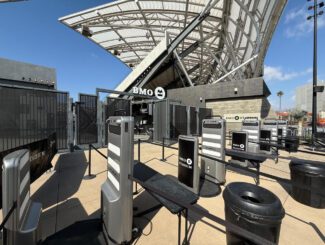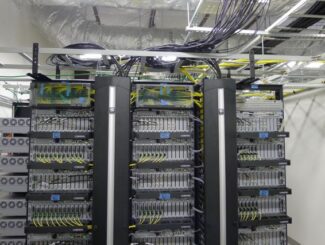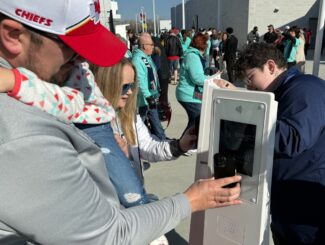
With the recent explosion of stadiums deploying new technology in just about every phase of venue operations, it’s easy to get caught up in the idea that technology alone can help solve multiple game-day pain points. But one thing struck me as I visited several stadiums this year, watching closely how fans interact with new technology: Without trained staff to help them, many fans would struggle.
Since it’s clear that the post-pandemic staffing shortage is still a real thing at many venues, it’s also understandable that owners and operators have turned to technology to help fill the operational gaps. But in subsequent visits to stadiums on live game days, it became apparent to me that staffing is even more critical than ever, especially as new technologies require new roles for both workers and customers.
Teaching fans new ways of entering venues

With the post-Covid attention being paid by venues to try to eliminate lines wherever possible, one of the most-popular new technologies is the walk-through security scanner. Unlike traditional metal detectors, which typically require attendees to stop and divest themselves of anything metallic, the new platforms from providers like Evolv, Xtract One and CEIA allow people to simply walk right by the devices.
Most of the platform providers and their customers have been saying that the new systems not only allow much faster ingress, but they also have fewer “false positive” scans than previous systems. They also typically require fewer staffers per stand, since there is no need for personnel at every gate to look at divested items or to hand-scan fans who set off the alarms.
And while some providers of the new technology are already quantifying value by noting the savings on staff resources, there is a twist on that claim. Since the new systems also require venues to construct an entirely new way for fans to enter the building, that also means completely new training is needed for the entry staff that do remain. With the Evolv systems, for example, instead of standing right by the gate staffers are typically positioned a few yards beyond it, watching a screen for any alerts. Fans who do need additional scanning must then be stopped and directed to a secondary-scan area, something that right now is set up differently for every venue we’ve been to.
What does this mean for staffing? For many venues it means that while you might be able to get by with fewer numbers, those who remain will need more training and more familiarity with the new systems, things that probably translate to higher pay. And until the new systems become second nature to guests, there is also some hand-holding and fan-use instruction added to the task list for some of the security staff.
Helping fans learn self-serve concessions
On the concessions side of things, a similar need for on-site instruction is also apparent. At every one of the stadiums I visited this summer and fall I saw a huge need for staffers who could help guide fans through their initial interactions with the new self- serve technologies being introduced.
While I did see numerous fans who had clearly become new-technology veterans, it’s helpful to remember that over any given team’s season, the large majority of fans will only attend one or a small number of events. That means that even at stadiums that have had new concessions technology for several years, like Empower Field at Mile High in Denver, at every game or concert there is an entirely new group of fans who need to learn the new technologies, often in hectic situations.
Unlike at a grocery store, where you might be able to learn a self-checkout scanner at a somewhat relaxed pace, at a stadium you may be confronting a new checkout technology at the front of a line of fans who are all trying to get food and drink as fast as humanly possible.
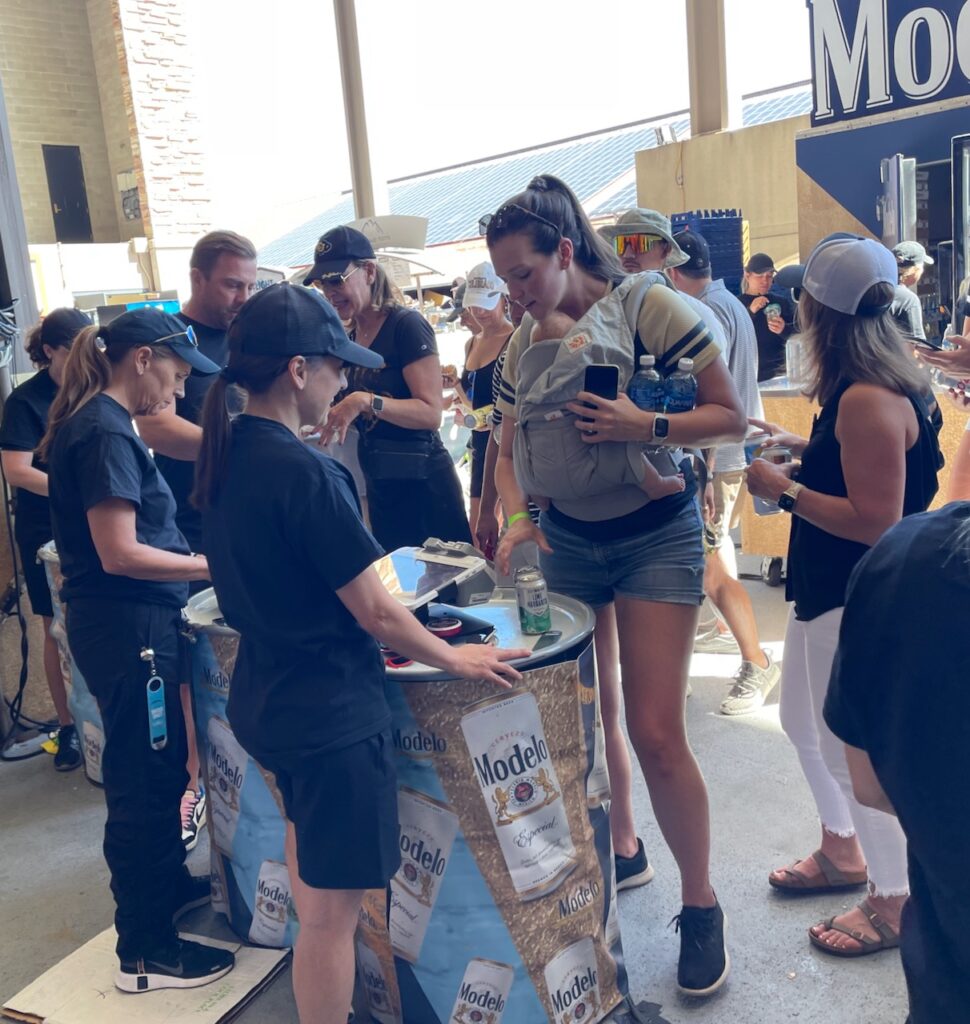
At Empower Field at Mile High I came away incredibly impressed by the performance of the staffers at the multiple stands with new technology as they clearly explained operations (and in many cases, took over and showed newbies how it worked by scanning their items for them), all in the concessions crush that happens in the hour before kickoff.
What occured to me as I watched the clearly veteran staff in operation was that for many of the new- technology concession stands, the traditional process of bringing in temporary concessions help (like school groups or others who would work as part of a fundraiser) may not work very well. Like the new entry technology, the new concessions systems also allow stands to operate with fewer staff – but the staffers who are working need to be more highly trained and more able to handle much different tasks.
The jobs that can’t be automated
At one of my stadium tours this summer, I took a break at the end to enjoy a cold beer provided by our venue hosts. As I sat at a bar overlooking an NBA basketball court, the bartender asked me what I did for a living.
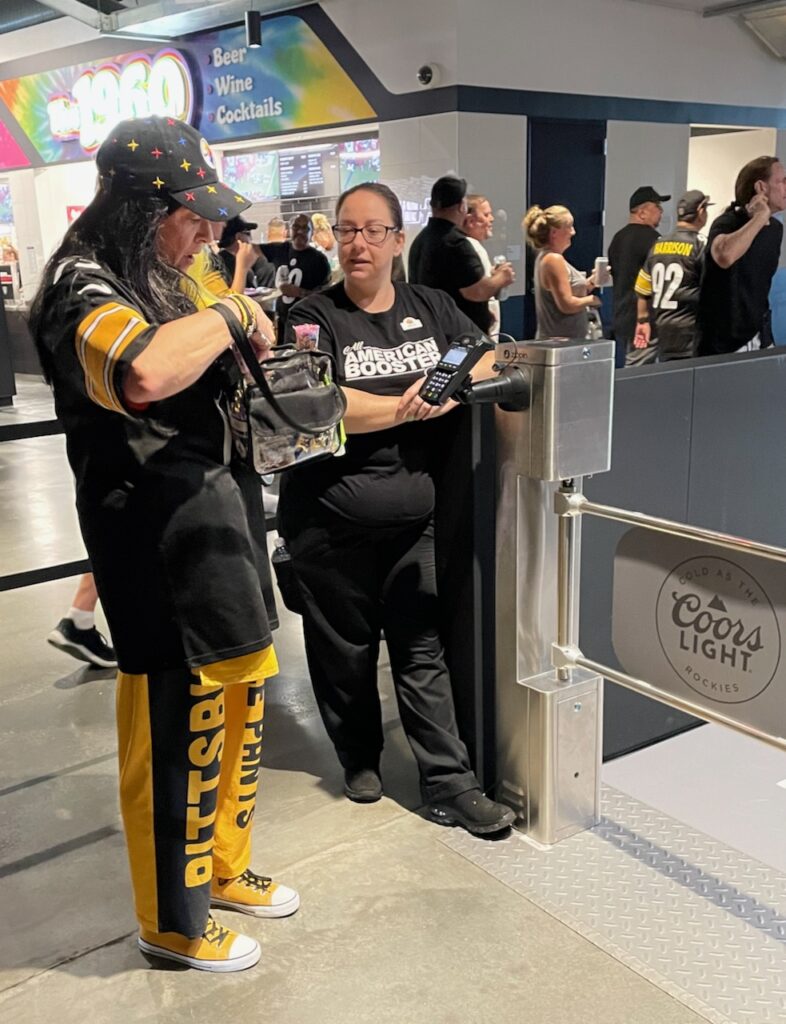
I explained it quickly, adding that I was primarily interested in one of the new things at that stadium, some checkout-free concession stands, one of which was right around the concourse curve from the bar.
“Oh,” she said. “You mean one of those places that’s taking away my job.”
I also heard another story this fall from an executive at a company that provides new concession technology where he admitted that one of the pleasures he takes away from a regular game-day experience was interacting with a “favorite” bartender at a stand near his seats.
Whether it’s someone who knows your favorite beverage and has it ready at your usual time, or someone who “pours a little more” to regular customers, that person may provide a worth that’s hard to measure – but it may be more attractive to some fans than an automated drink machine.
So yes, it makes sense to pursue, study and track the development and deployment of more technology in stadiums, since it is fairly clear that such advancements improve the experience for fans while also helping stadiums on the bottom line. But in that journey, taking care of the human resources behind all those changes needs the same amount of attention.
This column is part of our report on the concessions technology in use at Denver’s Empower Field at Mile High. To go to the start of the report, click here. You can also download a PDF of the full report, with more photos.




